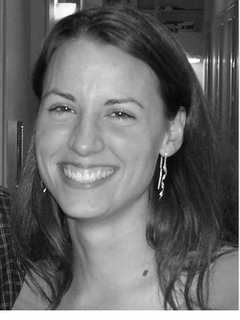I was in Tosagua for the second round of elections and I decided to visit one of two voting cites which was held in the courtyard of the towns technical high school. Several things were very interesting to witness.
 First, a group of enterprising Ecuadorians had set up laminating stands outside the voting site and charged each customer 25 cents to have their voting "receipt" laminated. Below are two of these "lamination stands."
First, a group of enterprising Ecuadorians had set up laminating stands outside the voting site and charged each customer 25 cents to have their voting "receipt" laminated. Below are two of these "lamination stands."

Lamination cost 25 cents. Having a good copy of one´s voting "receipt" is a good idea because proving one´s voting record is required for many financial transactions and for all Ecuadorian "permission to leave the country" which are required in addition to visas and passports! There is a "multa", a fine, for anyone who does not vote.
The second thing that I found particularly interesting was that the men and women were separated into different lines to vote.

The first side and a half of the voting "booths" were for men and the second half and third side where for women. This picture includes the sign designating this particular "booth" for "mujeres." Those "booths" for men where almost entirely maintained by men, and those for women where also staffed accordingly. I have not yet recieved what I consider a likely answer for why the voters are separated in this way. Several people told me that it was because "you can find your line more easily", and that "it makes the lines go faster".
The voting "booths" where cardboard tri-folds, set up on tables, with signs which announced that "your vote is secret."

The second round of presidential elections where held on Sunday, November 26th. Elections in Ecuador are always held on a Sunday to give citizens time to return to their city of registration. In my earlier post on the first round of Ecuadorian elections, I mentioned that voting is required for Ecuadorian citizens between the ages of 18 and 65. After 65, voting is optional. Military members cannot vote, and this was the first year that Ecuadorian citizens living abroad had the opportunity to vote. More than 60,000 Ecuadorians in Spain voted in the second round of presidential elections.
The final presidential race and election themselves were very interesting as they were between two pretty polarized characters. The first round of elections were held between 13 candidates (see "Ecuador National Elections- This Weekend!" post). (By the way, a Google search on "Ecuador National Elections", are somewhat alarming as my blog appears as one of the top few finds...).
Alvaro Noboa is the richest Ecuadorian and is one of the ten richest people in the world. He inherited a fortune, but has increased this fortune as a businessman with dealings from bananas to health care. Naboa had unsuccessfully run for presidential office 2x before. He was decidedly the more conservative candidate from the PRIAN party.
Correa was the younger, more charismatic, candidate, whose only political background was a 3-4 month stint as the Minister of Economics under Alfredo Palacio the outgoing president. Correa completed his PhD in Economics in the US and was the candidate supported by Hugo Chavez of Venezuela. Correa represented a group of interest groups rather than a single party. He wants to have a constitutional convention and referendum to replace the current constitution.


No comments:
Post a Comment